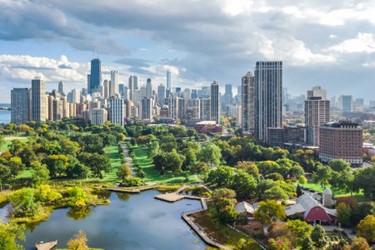Does Green Infrastructure Carry Health Risks?


Green and blue infrastructure — an approach to water management that utilizes natural buffers like trees and wetlands to encourage the natural water cycle in urban areas — is often pointed to as an ecological and efficient way to remove nutrients and other constituents from runoff before it enters source bodies.
But a study published in the journal Infection Ecology & Epidemiology points out that this nature-friendly approach may also bring with it some unintended health consequences.
“Increasing urban green and blue structure is often pointed out to be critical for sustainable development and climate change adaptation, which has led to the rapid expansion of greening activities in cities throughout the world,” according to the study’s abstract. “However, alongside numerous benefits, green and blue infrastructure also has the potential to create unexpected, undesirable, side-effects for health.”
The abstract goes on to list the introduction and improved survival of infectious pathogens that come with increased biodiversity in urban environments, potentially improved conditions for rats and ticks, and increased habitat for mosquitoes and toxic algal bloom as negative consequences that can come from increased green and blue infrastructure.
However, the abstract is also quick to note that these potential negatives are not necessarily reason to curb the practice, but impacts to be aware of as the projects take shape.
“Increased awareness of the potential hazards of urban green and blue infrastructure should not be a reason to stop or scale back projects,” per the abstract. “Instead, incorporating public health awareness and interventions into urban planning at the earliest stages can help ensure that green and blue infrastructure achieves full potential for health promotion.”
Ultimately, it is about balancing the benefits of green and blue infrastructure with the complications that arise from introducing different habitats to urban areas. The potential health consequences may be a surprise, but by thinking through them, water cycle planners can use green and blue infrastructure more effectively.
“Green infrastructure designs that fail to consider the effects of the installation's placement or the types of wildlife it may attract can increase risks of spreading serious diseases,” according to the Water Environment Federation’s analysis of the study. “Green infrastructure planners should involve ecologists and public health experts early in the design phase to ensure stormwater management improvements do not come with unintended consequences, the researchers advise.”
To read more about how municipalities leverage green and blue infrastructure in water management, visit Water Online’s Stormwater Management Solutions Center.
